Internal drives for screws
Download
技術進步和經濟因素導致其他內部驅動系統越來越多地替代一字頭螺絲。
現今,最常用的驅動器,會參考產品的設計、物流、採購和裝配中的可能性。
Cross recess H (Phillips)
according to ISO 4757
- The Phillips cross recessed head is the world’s most widely used system.
- Has a conventional cruciform recess with all walls inclined, the end of the screwdriver having trapezoid webs.
- The general dimensions are given in the product information of the respective catalogue group.
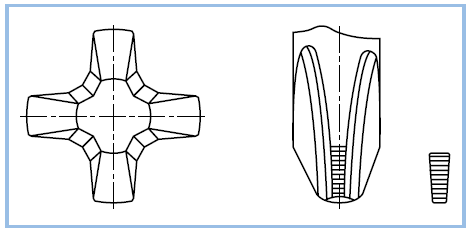
Cross recess Z (Pozidriv)
according to ISO 4757
- The Pozidriv cross recessed head is used principally in Europe.
- The four «tightening walls» of the cruciforme recess in contact with the screwdriver when tightening, are perpendicular. The other walls are inclined. This can improve assembly if the recess production is reliable. The Pozidriv screwdriver has rectangular webs at its extremity.
- The general dimensions are given in the product information of the respective catalogue group.
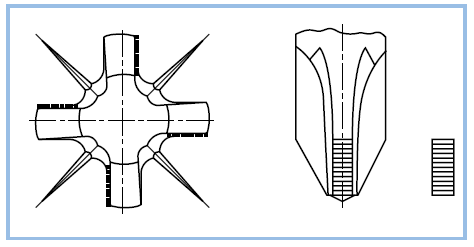
Hexagon socket
- Screws with hexagon socket head have proved their worth in the machine and apparatus construction fields.
- The width across flats of hexagon socket head screws is smaller than the WAF of hexagon head screws, permitting more economic design with smaller sizes.
- The general dimensions are given in the product information of the respective catalogue group.
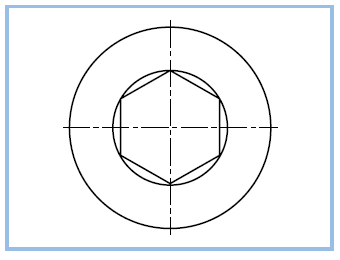
Hexalobular socket
according to ISO 10664
- The notion of a drive with hexalobular sockets are a decisive step in developing drives better adapted to manual and automated assembly. This drive is becoming increasingly popular throughout the world.
- Compared to drives like cross recesses and conventional hexagon sockets, this system is characterized by a lower risk of deterioration and a lower pressure force requirement. The typical «cam out» slipping of the tool has hence been eliminated and the force transmission improved.
- The general dimensions are given in the product information of the respective catalogue group.
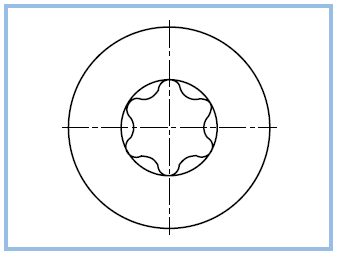
Torx plus®
- The Torx plus® drive is defined by ellipses and represents an improvement over the original hexalobular system which is defined by a series of radii.
- The Torx plus® system is compatible with the tools provided for the (Torx®) hexalobular system. However, the specific geometric benefits of Torx plus® can only optimize assembly when using the Torx plus® screwdriver bits (tool).
- The general dimensions are given in the product information of the respective catalogue group.
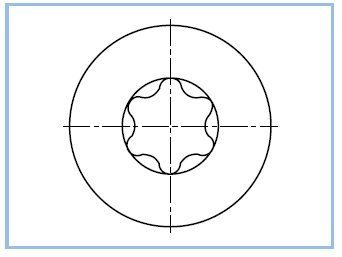
Technical advantages of hexalobular socket and Torx plus® drives and their economic benefit
- No need for pressure force as it is necessary when using cross recessed drives.
- Can accept the tightening torques for all property classes.
- No deterioration of the internal drive; hence reliable unscrewing. Very low assembly tool wear.
- High rationalisation potential for the assembly technique, as the drive is suitable for all types of screw.
- Economic head from the aspect of size, form and material, corresponding to cheese head screws DIN 84 and DIN 7984, however able to cope with high stresses with respect to permissible surface pressure.
- No problem assembling round head screws according to ISO 7380 and recessed flat head screws DIN 7991. The high property class 010.9 of these screws permitting increased strength of the hexagon socket can be reduced to property class 08.8.
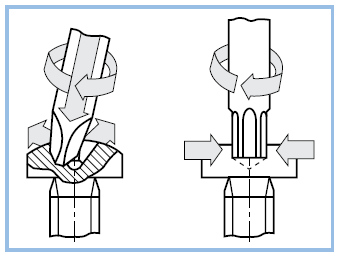
The hexalobular socket and the Torx plus® systems have benefits due to their design parameters
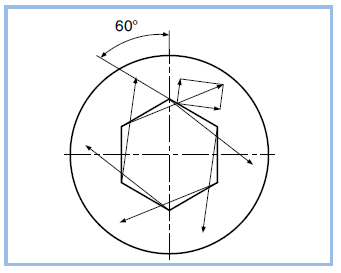 |
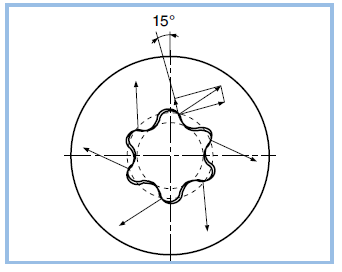 |
 |
| Force transmission angle of 60° with hexagon socket drives | Force transmission angle of 15° with hexalobular socket drives |
Force transmission angle of 0° with Torx plus® drives |
- The effective transmission angle of the hexalobular socket is 15° while that of a Torx plus® is 0°. A 0° drive angle has the advantage that the entire force acting on the drive is used to drive the screw in. The geometries of the hexalobular socket and the Torx plus® therefore extend the service life of the screwdriver bits by up to 100%.
- The cross section of the Torx plus® drive is larger compared to the hexalobular drive system. Therefore the torsional strength of the driving tool is increased.
- The good force transmission enables low penetration depths.

